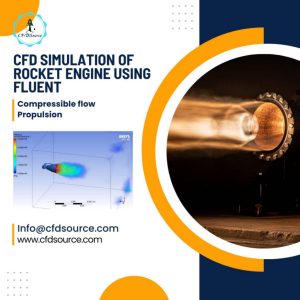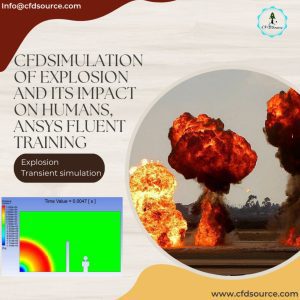1. Why Virtual Testing is No Longer a Choice, But a Necessity in Aerospace & Defense
Look, the days of relying solely on physical prototypes and wind tunnels are over. It’s not about replacing them entirely, but about being smarter with our time and money. Every major aerospace program now leans heavily on simulation upfront because the stakes are simply too high. We’re not just talking about aerodynamics; the complexity of modern systems means you’re juggling structural loads, acoustics, and intense thermal challenges. A solid [CFD thermal analysis] can be the difference between a reliable avionics system and a mission-critical failure.
The core reason for this shift is simple: virtual testing gives you answers faster and cheaper than any physical build ever could. It allows engineering teams to explore the design space with a freedom that was unimaginable twenty years ago. These key applications of CFD in the aerospace & defense industry are about more than just pretty pictures; they’re about making informed, data-driven decisions at every stage of a project.
Slashing Development Costs: Reducing Reliance on Expensive Wind Tunnel Tests
I’ll never forget a project from about a decade ago. A client was developing a new UAV and was ready to book a $1.5M slot at a cryogenic wind tunnel to test a new wing profile at a specific Reynolds number. They were confident. We convinced them to let us run a high-fidelity CFD analysis first. Within two weeks, our simulation predicted a catastrophic flow separation issue just beyond their expected flight envelope—something their preliminary models missed.
That simulation cost them a fraction of the physical test and, more importantly, saved them from a very public and expensive failure. That’s the real power of CFD. It’s not just about reducing cost; it’s about front-loading the discovery of problems when they’re still cheap to fix. 💰
Accelerating Innovation: How CFD Shortens the Time-to-Market for New Platforms
The traditional design cycle is slow: build, test, break, repeat. CFD breaks that cycle. Instead of building one physical prototype, you can simulate ten, or fifty, design variations in the same amount of time. You can tweak a winglet’s angle by half a degree, change a fuselage fillet’s curvature, or test a dozen different engine intake geometries to find the optimal one without ever touching a piece of metal.
This rapid iteration is a game-changer. It allows for a level of design optimization that was previously impossible. It’s a very similar dynamic to what we’ve seen transform the [world of modern automotive design], where virtual prototyping is now standard practice for everything from aerodynamics to cabin climate control. The result is a better product, developed in a fraction of the time.
Mitigating Risk: Predicting Performance and Failure Modes Before Building Prototypes
What happens if an engine ingests a bird? How does the airframe behave during a high-G maneuver? Can our missile safely separate from the aircraft at Mach 1.5? These are high-risk, high-consequence scenarios that are incredibly dangerous and expensive to test physically. CFD lets us explore these “what-if” scenarios safely from a workstation.
We can model events like aeroelastic flutter, buffet onset, and unsteady aerodynamics to understand the absolute limits of the aircraft. The last thing a program manager wants is for a late-stage flight test to reveal a fundamental flaw in it’s design. Simulation gives us the foresight to identify and fix these critical issues on the ground.
2. External Aerodynamics: Mastering Flight from Subsonic to Hypersonic Speeds
Alright, let’s get into the classic application: making things fly efficiently. ✈️ External aerodynamics is the bread and butter of aerospace CFD. From the slow, gentle lift on a glider’s wing to the violent shockwaves forming on a hypersonic vehicle re-entering the atmosphere, CFD is the tool we use to understand and predict these forces.
The challenge is that the physics of the air changes dramatically with speed. A simulation for a subsonic drone uses a completely different set of models (e.g., incompressible flow, standard turbulence models) compared to a scramjet flying at Mach 7, where you have to account for extreme temperatures and air chemistry changing (real gas effects). Mastering this entire spectrum is what separates a basic user from a true specialist.
Case Study: Lift & Drag Optimization on Transonic Wings using Ansys Fluent
One of the trickiest flight regimes is transonic (around Mach 0.8 to 1.2), where parts of the flow are subsonic and other parts are supersonic. This is where most commercial airliners operate. A key challenge here is the formation of a shockwave on the upper surface of the wing, which causes a huge spike in drag, killing fuel efficiency.
Using a tool like Ansys Fluent, we can meticulously model this. The goal is to design an airfoil that keeps the shockwave as weak as possible and pushes it as far back on the wing as it can go before causing flow separation. It’s a delicate balancing act. We often compare multiple designs in a simple table like this to make a quick decision:
| Airfoil Design | Lift Coefficient (CL) | Drag Coefficient (CD) | L/D Ratio | Notes |
| Baseline SC(2)-0714 | 0.52 | 0.0135 | 38.5 | Strong shock, early separation. |
| CFDSource Mod-V3 | 0.51 | 0.0112 | 45.5 | Weaker shock, delayed separation. |
The same principles of optimizing lift and drag are crucial in other fields, too, and are completely [transforming how we design renewable energy systems] like wind turbines. A small improvement in aerodynamic efficiency, whether on a wing or a blade, leads to massive performance gains over the lifetime of the product.
3. Propulsion Systems Analysis: The Powerhouse of Flight
Let’s talk about the heart of the machine: the engine. Propulsion CFD is a world of its own, dealing with extreme temperatures, pressures, and incredibly complex fluid dynamics. You’re not just moving air; you’re managing a controlled explosion. It’s one of the most demanding areas of simulation, but it’s where we find some of the biggest performance gains.
Inside the Engine: Simulating Combustion Efficiency and Emissions in Gas Turbines
Combustion is messy. It’s a turbulent, multi-species, chemically-reacting flow. Getting it right in a simulation is tough. You’re not just looking for thrust; you’re hunting for pockets of inefficiency, predicting harmful emissions like NOx and soot, and ensuring the flame remains stable across all operating conditions.
This is where experience really counts. I’ve seen simulations where the wrong chemical kinetics model predicted a perfectly clean burn, which was completely wrong. You have to understand the physics to choose the right tools. A mistake here doesn’t just give you a wrong number; it could lead to a design that fails emissions tests or suffers from unexpected flameouts. It’s a bit like medicine, where you can’t just throw any drug at a problem; the same detailed understanding of complex systems is seen in [CFD’s growing role in the biomedical field], where precision is a matter of life and death.
Turbine Blade Cooling: A Critical CFD Application for Enhancing Durability and Performance
Here’s a fun fact: the gases entering the first stage of a high-pressure turbine can be hotter than the melting point of the blade material itself. The only reason it doesn’t turn into molten metal is because of incredibly sophisticated cooling designs. We use CFD to design these.
This involves modeling the flow of cooler air bled from the compressor through tiny, intricate passages inside the blade. This air then exits through strategically placed holes to create a thin film of insulation over the blade surface (film cooling). It’s a delicate balancing act—use too much cooling air and you lose engine efficiency; use too little and the blade fails. CFD is the only practical way to visualise and optimise this process.
5. Store Separation & Weapons Bay Dynamics: Ensuring Mission Safety
This is one of those high-stakes applications unique to defense. “Store separation” is the process of a missile, bomb, or fuel tank safely detaching from an aircraft in flight. You absolutely cannot have the store hitting the parent aircraft. Simulating this is tricky because you have two or more bodies moving relative to each other in a high-speed flow field.
The CFDSource Approach: Using Dynamic & Overset Meshing to Guarantee Safe Munitions Release
The old way of doing this involved a lot of guesswork and very risky flight tests. Now, we use advanced techniques like Dynamic and Overset Meshing. Think of Overset Meshing like having two separate, high-quality grids—one for the aircraft and one for the store—that are overlaid on each other. The software then intelligently handles the communication between them as the store moves away. 🚀
This allows us to accurately predict the trajectory of the store and the aerodynamic forces acting on it at every millisecond of the release. We can identify potential re-contact risks or unsafe tumbling motions long before a pilot is in the cockpit. The complexity is similar to modeling airflow around a cluster of skyscrapers, a problem we tackle in [CFD simulations for urban wind engineering].
6. Beyond the Simulation: How We Ensure Your Results are Reliable and Actionable
A simulation is only as good as it’s validation. A pretty plot is useless if it’s wrong.
Our Validation Process: Aligning CFD Predictions with Experimental Data
We have a non-negotiable rule: always question the results. Our process isn’t complete until we’ve performed sanity checks. This means comparing the simulation data against something tangible—published experimental data for a similar case, results from established academic papers, or even simplified analytical calculations. This rigorous validation step ensures that the results we deliver are not just numbers, but actionable intelligence you can base critical design decisions on.
Your Intellectual Property is Safe: Our Commitment to Confidentiality and NDAs
We get it. You’re developing next-generation technology. Your designs, data, and concepts are your most valuable assets. We treat our client’s data with the same level of security we’d expect for our own. All projects are handled under strict non-disclosure agreements (NDAs) to ensure your intellectual property remains just that—yours.
7. Ready to Elevate Your Engineering Project?
As you can see, the scope is vast. From optimizing a single blade to ensuring mission safety, these key applications of CFD in the aerospace & defense industry provide an unparalleled advantage. If you’re facing a complex fluid dynamics or thermal challenge, chances are simulation can provide the clarity you need to move forward with confidence.


